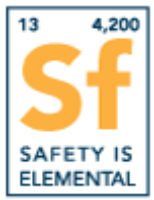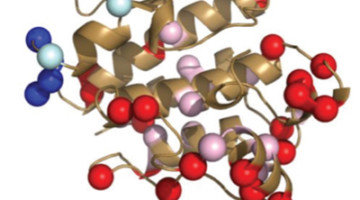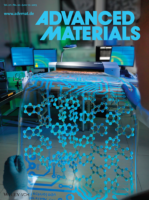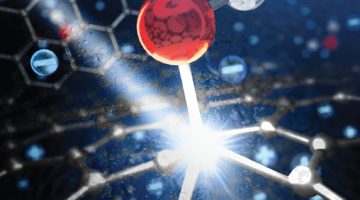The LBNL publication reporting system allows you to report your journal articles with just a DOI or PubMed number. We invite you to test the system and provide your feedback. Read more »
Signal Speed in Nanomagnetic Logic Chains
A time-resolved x-ray imaging technique directly observes signal propagation dynamics in nanomagnetic logic (NML) chains. The technique can assess NML reliability on fast time scales and help optimize chain engineering for this promising ultralow-power computing architecture. Read more »![]()
![]()
User Experiment Safety Process Update: For Experiments After August 17
The ALS has updated its User Experiment Safety Process. The main change that will affect users is a new requirement to complete an Experiment Safety Sheet (ESS) for each visit and for each beamline. This is a change from current procedure where an ESS can be valid for up to one year and may cover more than one beamline. Read more »
Ken Chow, ALS Engineering Lead
In his new role as ALS Engineering Lead, Ken Chow has taken on a consolidated role that was previously split between mechanical and electrical. As of August, a reorganization of ALS engineering has Chow overseeing all engineering tasks at the ALS, which includes magnetic and vacuum systems, mechanical engineering and technology, and electrical and controls engineering. Read more »
Ancient Proteins Help Unravel a Modern Cancer Drug’s Mechanism
The cancer drug Gleevec is extremely specific, binding and inhibiting only the cancer-causing tyrosine protein kinase Blc-Abl, while not targeting homologous protein kinases found in normal, healthy cells. Researchers at the ALS have uncovered exactly why that is the case, pointing to novel methods of drug discovery. Read more »![]()
![]()
The Crystallization of PEDOT:PSS Polymeric Electrodes Probed In Situ during Printing
Organic electronics have emerged into a highly interesting field of research with a great variety of applications. P. Müller-Buschbaum and co-workers demonstrate the importance of in situ investigations during the printing process of organic electronics. In situ grazing-incidence wide-angle x-ray scattering is used to follow the crystallization process of highly conductive PEDOT:PSS polymer mixtures. These findings are important for tuning transparent polymeric electrodes for organic electronics. Cover Image by Christoph Hohmann, Nanosystems Initiative Munich (NIM). Read more »
Spectroscopy of Supercapacitor Electrodes In Operando
X-ray spectroscopy of graphene supercapacitor electrodes under operating conditions reveals changes in electronic structure and bonding. The research could lead to an improvement in the capacity and efficiency of electrical energy storage systems needed to meet the burgeoning demands of consumer, industrial, and green technologies. Read more »![]()
![]()
ALS X-Rays Shine a New Light on Catalysis
Recently a team of Stanford and Berkeley Lab researchers used x-rays at the ALS in a novel way to observe the behavior of electrons during technologically important chemical reactions in metal oxide electrocatalysts. What they learned has upended long-held scientific understanding of how these catalysts work. Read more »![]()
![]()
Moore Foundation Funds ALS Researchers for Promising New Technique for Studying Materials
A novel x-ray scattering concept by researchers at Lawrence Berkeley National Laboratory’s (Berkeley Lab) Advanced Light Source (ALS) is receiving support from the Gordon and Betty Moore Foundation in the amount of $2.4 million. The grant was awarded in April by the foundation. The lead investigator on the effort will be ALS Division Deputy Zahid Hussain with ALS Director Roger Falcone acting as co-PI on the project. Read more »
A Fullerene that Breaks the Rules
Scientists used small-molecule x-ray crystallography to verify and characterize the first non-functionalized fullerene with a heptagonal ring in the cage. This new molecule changes the definition of a classical fullerene and expands the range of structural possibilities for endohedral fullerenes. Read more »![]()
![]()
- « Previous Page
- 1
- 2
- 3
- 4
- …
- 17
- Next Page »







